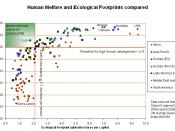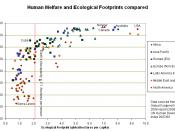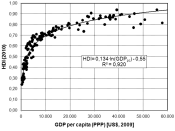69EG1205 Assignment 2a Saeed Karolia 08242310
Measuring Development
Measuring sustainable development in a country can be seen as a hard task to undertake, however many critics dispute this due to the fact that indicators have been set up that try to measure sustainable development.
The UN Human Development Index (HDI) was one indicator that was set up in 1990 through the United Nations Development Programme (UNDP) to measure sustainable development. It can be seen much broader compared with other indicators, such as the Gross Development Product (GDP). Furthermore, the UNDP saw HDI as simple measure for human development, therefore, leading to bigger solutions in human development issues. Also, there was a need in the development community for more information to be gathered and for cross-country comparisons to be made. HDI measures a country's average achievements in three basic aspects of human development, longevity, knowledge, and a decent standard of living. Longevity is measured by life expectancy at birth; knowledge is measured by a combination of the adult literacy rate and the combined primary, secondary, and tertiary gross enrolment ratio; and standard of living by GDP per capita (2005 Human Development Report). The HDI index can be seen as a way to capture the attention of policy makers and NGOs to focus on human issues and development rather than other issues, such as the economy. Moreover, HDI is very important in highlighting that the people should be looked at when assessing a country's development and not the economy. Equally, the HDI can show the differences between two countries and enables governments to take the necessary action in order to progress in human development. The HDI tries to measure the average achievement in a country and shows the relationship between income and well being within a country (2007/08 Human Development Report).


